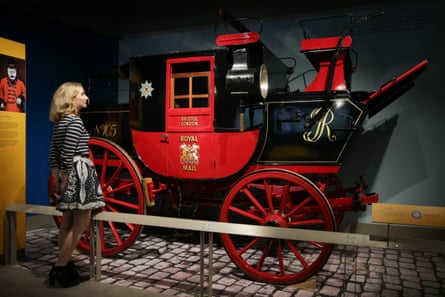‘Mail Rail was like having your own giant train set to run.” The words are those of Ray Middlesworth, one of the last engineers on London’s underground postal network, and they are now etched on an information plaque in the subterranean section of the new Postal Museum, which has opened in Farringdon.
The underground Mail Rail system transported letters and parcels 6½ miles across London, from Paddington to Whitechapel, for over 75 years – from the 1920s until its closure in 2003, linking six sorting offices with mainline railway stations and delivering four million letters every day. It’s now a museum covering not just the subterranean service but the history of Royal Mail. Yet it’s the trains that will steal the show: from 4 September visitors will be able to climb on board replica rail cars and ride through this piece of industrial heritage.

The whole network criss-crossed the tube lines, and at its peak the service operated for 22 hours a day, employing more than 220 staff. It was a vital part of underground London, even though the public never saw it.
Now two new trains have been adapted from the original design to accommodate people (though it is a very snug fit) and will take visitors on a 10-minute round trip from what used to be the Mount Pleasant depot, 21 metres underground. The miniature wagons career around the tunnel system, pausing to allow passengers to watch video montages, which tell the story of the Mail Rail and speculate about what was in the letters that once clunked down these tracks.

You may be travelling the same route as letters from a 1930s munitions worker to her distant army beau, or from a starstruck child in the early 50s to the then-Princess Elizabeth. In the accompanying Mail Rail exhibition, budding engineers and train drivers can operate the lever frame, race pneumatic cars and even dress up in the flat cap and trench coat of a travelling postal worker. Upstairs in the Postal Service exhibition, you can mock up a stamp with your head on it instead of the Queen’s, and use cuddly toys to act out an incident where a lioness that had escaped from the zoo attacked a mail coach.

There’s a small display of beautiful modern stamp designs and a selection of posters and magazines from the 1950s and 60s that add a colourful, distinctive (and now retro-chic) aesthetic. Through the temporary exhibition, Writing Home: Letters as a Lifeline - which explores how people have used letters and parcels to stay close to family and friends when they are separated by war, repressive regimes and financial necessity - the Postal Museum achieves its aim of bringing a more human dimension to old-fashioned snail mail.









Comments (…)
Sign in or create your Guardian account to join the discussion